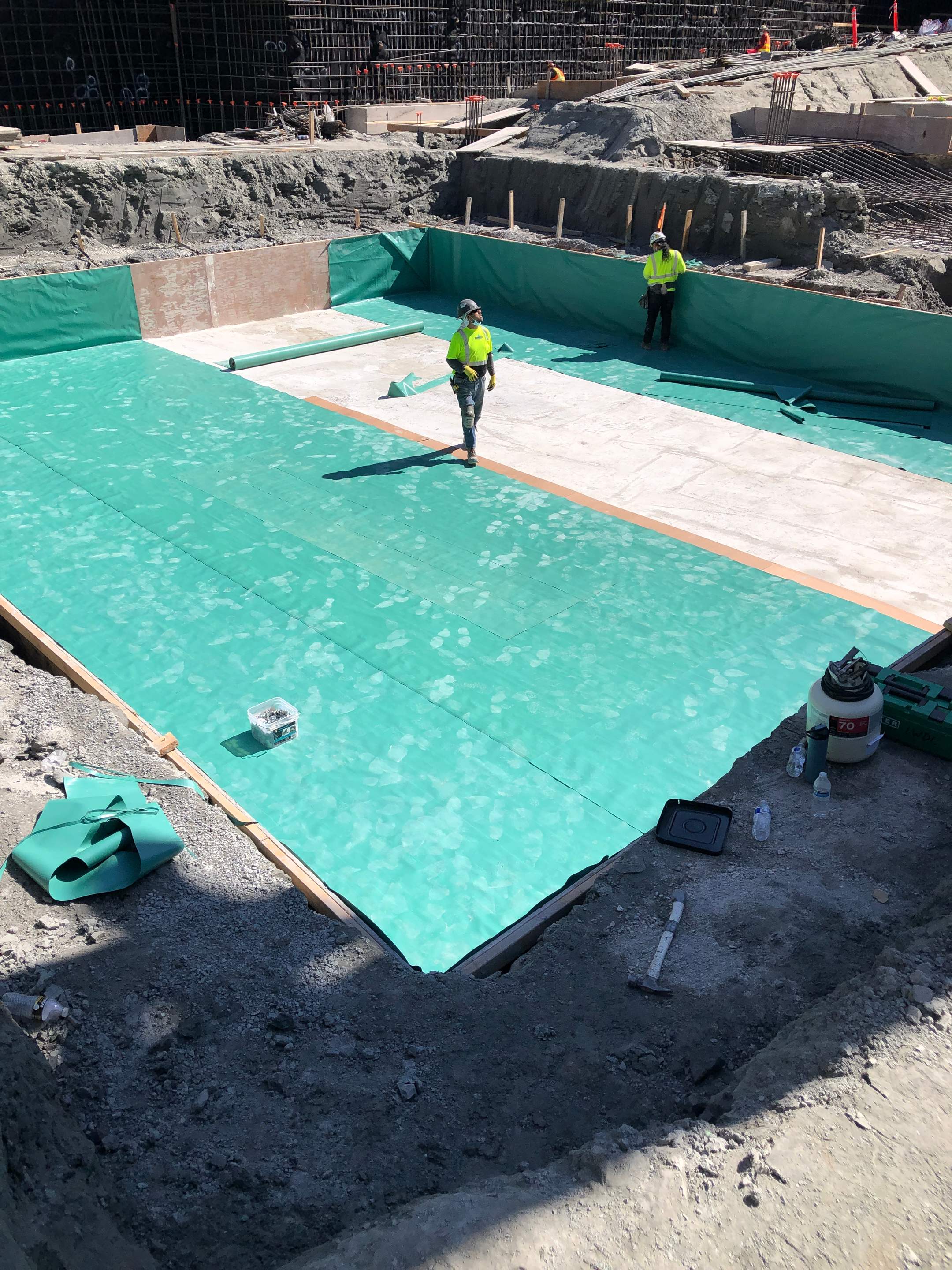Elevators are a highly utilized feature in many commercial buildings. You want your elevator to work quickly, smoothly and safely. Whether your elevator is hauling occupants or freight, it is important to keep everyone and everything secure during transportation. If water mitigation occurs, it could become a costly fix and could harm the overall efficiency of the operation.
So, why do we need to talk about waterproofing when it comes to elevators and the overall building envelope quality? Because what goes up, also goes down — into the ground.
Why Waterproof Elevator Pits?
Oftentimes overlooked as an element of the building envelope, the elevator pit can present certain challenges in the proper design of a structure’s building envelope. Not paying attention to the design of a structure’s elevator pit can prove to be a costly mistake for building owners thanks to water leakage.
Every state has its own regulations regarding elevator pit design and inspections. In Washington, the pit must “be designed to prevent the entry of groundwater into the pit” (WAC 296-96-05190). California requires inspections every two years. If water is found in the pit, the inspector has the authority to shut down the operation of the elevator.
Depending on the extent of water leakage, elevator equipment can be damaged and precipitate costly repairs. Most elevator pits extend a minimum of five feet below the grade of the structure.
In certain conditions, extension below grade is enough to require the design and use of waterproofing on the elevator pit. The base of the elevator pit may extend down into the existing groundwater table or perched water conditions may create intermittent submerging of the pit from lateral water migration in rain events.
Depending on the number of elevator pits and the complexity of the structural slab design, waterproofing elevator pits can become a significant additional cost in the construction of a new structure. The best and easiest approach for waterproofing an elevator pit is to design with a slab-on-grade foundation surrounding it.

The Challenges of Waterproofing Elevator Pits
Some foundation plans can be complex, including multiple pilecaps and/or grade beams. Elevator pits are commonly designed adjacent to a grade beam or even incorporated into the mat foundation itself. The introduction of the other structural design elements of the slab can complicate the approach for effective waterproofing.
Ideally, the project architect would coordinate with the structural designer and waterproofing consultant to plan the optimal placement for elevator pits in conjunction with the overall foundation plan. However, oftentimes, the structural engineer operates independently of the architect on the design of the slab.
This leads to situations where proper detailing of the waterproofing system is complicated by the foundation design elements. To further compound waterproofing challenges, elevator pits are often left exposed to the elements for an extended period of time prior to forming and concrete placement.
Certain kinds of commonly used waterproofing are adversely affected by this exposure to the elements as they can “activate” when exposed to moisture. It is not uncommon for waterproofing to have to be removed and replaced when this happens, adding to the waterproofing expense and construction schedule.
Materials for Elevator Pit Waterproofing
There are a variety of materials typically used for elevator pit waterproofing. These materials are designed to be installed first with concrete applied directly to them. They are also commonly used in vertical blind-side assemblies and tied into under-slab assemblies in hydrostatic conditions.
Depending on the design of the elevator pit, additional attention must be given to how the elevator pit waterproofing ties into these other waterproofing elements. In some instances, designers rely on “integrated waterproofing” utilizing a concrete design mix that includes a special additive that gives the cured concrete better waterproofing ability without the application of a positive side waterproofing membrane.
Careful attention must be given to the placement of the water stop in the construction joints of the elevator pit since no positive side waterproofing spans the joint. The most commonly utilized elevator pit waterproofing under the slab and in single-sided formwork is bentonite sheet material.
Bentonite is a natural clay that swells when hydrated, creating a natural waterproof barrier. These materials are typically inexpensive and easy to apply. However, the installed material must not be allowed to hydrate prematurely.
Environmental exposure can be a factor, especially in wetter climates like the pacific northwest. Other systems include pre-formed sheet membranes produced from various types of materials including butyl, polyethylene or composite fluid and sheet assemblies.
Some of these systems even create a direct bond with fresh cast concrete to prevent lateral water migration between the sheet membrane and concrete substrate. These materials are typically not as environmentally sensitive as bentonite-based systems. Proper detailing of penetrations, seams and transitions is essential for the overall effectiveness of any waterproofing system.
A trained and experienced applicator should be utilized for the installation of any elevator pit waterproofing, along with consultation with the waterproofing materials manufacturer’s technical representatives.
Rely on EPRO
Elevator pit waterproofing is a structural slab element that can often be overlooked or given little consideration in both design and materials selection, however, leaking elevator pits can cause shutdowns and require costly repairs. Coordination of design between the architect, structural engineer and the project waterproofing consultant can help implement the right waterproofing solution.
Selection of materials should be considered based on construction site conditions, the waterproofing applicator’s experience, and transitions to other elements of the building envelope. A better understanding of elevator pit waterproofing will bring your project to the next level!
Ready to get started on your elevator pit waterproofing project? Rely on EPRO to get the job done right the first time around. With more than 30 years of experience, our seasoned professionals are ready to help give you the best building envelope possible. Contact us today regarding any questions you have about waterproofing, building envelopes and more.
